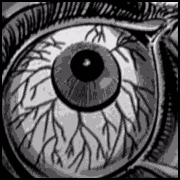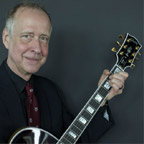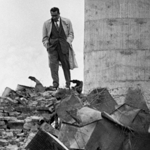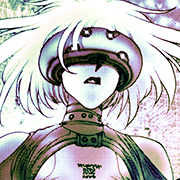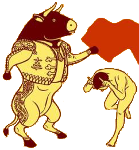|
This makes me happy. It reminds me of the summer after I graduated high school and buying my JEM and playing this entire record every day after work before my Dad got home.
|
|
|
|

|
| # ? May 18, 2024 02:46 |
|
AstroZamboni posted:I hope y'all can help me with this... Update: thanks for the help, folks! I wound up enlarging the control plate holes with a file and I'm now sitting pretty with CTS pots, an orange drop cap and a Switchcraft jack. The issues I was experience are 100% gone and everything sounds AMAZING.
|
|
|
|
I would appreciate some help in identifying the chords beings played here and maybe a little more on the effect he's using: https://youtu.be/USgYvrF3u_w?t=1434 This riff the guy just makes up in the demo booth is extremely my kind of poo poo. That's one of my goals I set for my playing over the long term is being able to improv some neat chord changes all the way up the neck like that. And is he just using a delay?
|
|
|
|
former glory posted:I would appreciate some help in identifying the chords beings played here and maybe a little more on the effect he's using: I havenít watched this yet because phone speakers but I think you might like this: https://m.youtube.com/watch?v=T-iBbJ1s4kc Check out his band Toska too. Heís definitely one of my favorite guitarists around right now.
|
|
|
|
That was a great video- thanks. I'm going to check him out some more, hopefully see that video he talks about making where he might deconstruct some of his songs. He has a really nice sound I dig very much. I honestly thought the dude was just an employee at the Anderton store who helped them make videos and did the occasional Shred Lord bit.
|
|
|
|
former glory posted:I would appreciate some help in identifying the chords beings played here and maybe a little more on the effect he's using: He's at NAMM so obviously he's playing through some wacky magic machine, but it sounds to me like a spacey reverb/delay combo - maybe more of a tape echo, there's some warbly sounds going on in there, like when he starts playing that second, main riff. But yeah a delay is the main sound there, and that's probably what you want if you wanna do that kind of thing. The repeats give you the big spacey texture of a reverb, as well as the rhythmic sounds of the stuff being played like there are several individual guitar players, so it gives you a bunch of layers and interactions with what you just played. Pedals are a thing though so really you gotta hear a few (preferably by playing them) and going dang I like the sounds coming outta this one For the first riff I got these chords pre:x-0-5-6-3-0 (A11 I think?) 1-3-3-2-0-0 (Fmaj7#4 maybe? It's an F chord without the barre so the top two strings are open) pre:x-0-7-5-8-x (Am7 - think of it like an Am7 in the top strings, the low open A is an extra octave down) x-0-7-5-7-x (Am6 (I think) - same as before but the highest note is moved down) x-0-7-5-x-5 (Am - that moving high note has moved up to where it's another A) x-1-3-0-3-x (Bb6) x-5-7-7-6-x (Dm - it's the middle bit of a barre chord) x-8-10-9-10-x (Fmaj7 - middle of a barre again, he looks like he's fingering that maj7 (the 9) but I can't really hear it so a straight major barre would work) x-10-12-12-11-x (Gm - middle of a barre again) I can't tell what his picking pattern is in the main bit (you could use the speed thing in youtube to slow it down and look) but it seems like he's playing a consistent pattern over the middle 4 strings, and just varying the chord he's holding on those strings, so you get kind of an arpeggio thing going, a bit like travis picking. Once you have a picking pattern down, you can kinda autopilot with it and just concentrate on changing the fretted notes, so that's a technique you can try too. (He does move up to the high E for that moving melody note bit I mentioned, but that's kinda part of the style - you can focus on one of the strings carrying the melody, so your picking is kinda consistent until you have to pick that one note, and that's the only one you have to actually pay attention to, so it still acts like a consistent pattern you don't need to think about too much if that makes sense) tldr get a delay even if it's just on your computer and have at it baka kaba fucked around with this message at 03:24 on Mar 5, 2019 |
|
|
|
I think he's just arpeggiating chords into a BigSky reverb. The BigSky is one of the more popular and expensive boutique delays right now like the Mercury7. They do a bit more than your basic reverb they do all that crazy awesome spacey sounds. Which also makes them cost a loving ton. :/
Philthy fucked around with this message at 03:35 on Mar 5, 2019 |
|
|
|
Yeah, there's an octave up mixed into the wet signal on a big sky so that can obfuscate what you're hearing.
|
|
|
|
Heís definitely at the Strymon booth at NAMM so my guess is that heís playing around with their new pedal, the Volante ďmagnetic echo machineĒ. It looks like such a good pedal but goddamn Strymon stuff is expensive.
|
|
|
|
baka kaba posted:
Thanks for taking the time to look into it and sharing your insights. I'd start noodling around with this right away but I'm stuck on a trip and can't get to my gear until tomorrow. I'm really digging the sound of those chords up the neck that still have some open strings in there. I'm going to experiment and play around with that. E: those Strymons definitely look good. Almost too much pedal for me, but I'll try plugging into one next time I'm shopping. former glory fucked around with this message at 05:23 on Mar 5, 2019 |
|
|
|
One thing you can do is take a chord shape (either one you know, or just put your fingers in a pattern) and just move it up the neck, and let the open strings add in this constant pedal tone. You'll find some positions sound "good", so those are like safe places to jump to if you're just noodling (try moving an open C chord up the neck and playing some or all of the strings) Other places sound "bad", which gives you interesting tension and colour, and you can resolve them by either moving the chord to another position, muting the open string that's clashing, or moving your fingers so you get different notes interacting with it. You can even change up the shape, move a finger to fret a note on that open string instead, leaving its previous string open instead I mean this is a completely non-theory approach since you're really just throwing stuff at the wall, but it's fun and can really break you out of the box - you end up with weird sounds and ideas you probably wouldn't have come up with otherwise, and playing around with it helps develop your ear and intuition. You can definitely look into the theory of why it works later, what chords you've come up with etc
|
|
|
|
You are right on about the chord names. I didnít have a chance to listen to the clip but I wanted to add a couple clarifications (although technically you are not wrong)quote:For the first riff I got these chords
|
|
|
|
Oh nice, thanks! How come you'd call it an A7add4 rather than an 11? Is it just because there's no 9 so it makes it a little clearer? Or because it's only a step up from the third? I'm never sure of the rules on this, especially with guitar being a kind of compromise instrument where you're limited in what you can play together Same goes for the other one I guess! Why's it #11 here and not #4? I always liked seeing the names of these though, when I first started out. This kind of chord popped up a lot in the music I wanted to play, where it's a standard shape but with some open strings that let in some exotic notes that make it sound cool and interesting. Then someone tabbed the song and you'd see what the technical name for the result is, and it looked like you'd invoked some arcane music rites instead of just, lifted a finger or moved a shape a bit
|
|
|
|
For the second one, it's the 3rd (A) that's displaced up an octave, where in a straight voicing it would slot between the low F and C. Then the B is in the correct position relative to the bass root, while the high E major 7th is displaced up an octave because the only other place to play it is on the D string, which is taken up by the high F, both to reinforce the power chord and to more directly hear the major third between it and the A. Lose the high F, drop the A and E down an octave, and it becomes very obviously a maj7add#11 as notated there. Writing a true add#4 chord is gonna put the B directly next to the C which, in addition to being impossible on guitar with this chord shape, would also sound like poo poo, because it's a half step interval which clashes horribly. And if you're gonna move it up an octave anyway to avoid that harsh sound, you may as well acknowledge that and call it a #11 instead.
|
|
|
|
Would this be where I'd ask about constructing chords and such in standard notation or is there a general I guess.. Music theory thread? I'm taking a "guitar for dummies" course and our up coming test includes a section on identifying and writing out given chords, but straight memorization is boring and there's obviously a systematic nature to it, I just can't seem to derive it from what I've been looking at and the finger positions chart given to us by the instructor. Stacking them up a staff doesn't really clue me in, so I'm generally confused. It's major/minor/dominant 7th.
|
|
|
|
baka that post is awesome, thanks!
|
|
|
|
Synnr posted:Would this be where I'd ask about constructing chords and such in standard notation or is there a general I guess.. Music theory thread? I didnít know there was a music theory thread! I need to get in on that. If it is relating to guitar though then ask away. We play notes and chords so itís all relevant. baka kaba posted:Oh nice, thanks! Part of it is anticipating how a guitarist will voice the chord. Since we canít play all of the upper extensions and all of the notes of a 7th chord together, with the limitation of not enough strings, we are always making concessions so youíre partially right that since it doesnít have the 9th we could call it add4. However it is mostly due to expecting how a guitarist would voice it if it was listed as add 11 or 4, and in which part of the chord he would put that note. It helps that it is next to the 3rd, which makes the 4th make sense but most common #11 voicings also have that note next to the third (two common ones being R-7-3-#11 and R-3-#11-7. That boils down more to standard harmony and that a chord is much more likely to have a #11 than a #4, since the 7th is present and since we can add the 9th and retain the quality of the chord. If you add the 9th into a chord with a natural 4/11 on guitar it is going to start sounding like a poly chord or lose its character in some way just because of how we have to voice it on the instrument. Unfortunately there arenít really any books that go over this so far as I know. Those choices, if Iím writing a tune, I usually have to make based on what Iíve seen written over the years by good, clear composers/songwriters/copyists and also how I would interpret a chord symbol if I was given no standard notation and only a chord symbol. ó- I have something to share but also a question. My dad passed away 11 years ago today and I wrote a quick tune this morning for him (called D-A-D for obvious reasons but also because I wanted to feature those notes strongly in the melody). I finally got around to recording it tonight and there is this intermittent ďpoppingĒ on the recording. Iíve never had this issue before, and when monitoring the recording through headphones I donít hear any popping. Itís only on the recording that it happens so I donít know how to diagnose it. The only different thing is that Iím using a new amp, and itís a tube amp. I have almost always used solid state except when I was in high school/early college but I canít imagine that would be it since the popping isnít coming through the amp? I am also hanging the mic over the amp, which I havenít done in the past and it is really staticky this time of year. Any ideas why it might be happening? I am recording into my phone with a Rode NT2 going through a Zoom H6 running in USB interface mode. When I was testing the audio (without video, just into the recorder) I wasnít getting any popping either so maybe itís the phone but Iíve used this phone like this before without the issue so Iím confused. https://www.youtube.com/watch?v=Nic0EBaUr5I
|
|
|
|
Rio - I love D-A-D. Can you tell me what chord shapes youíre using from someone who primarily knows the E shape on the 6th and the A shape on the 5th? Youíre doing some cool things and I want to do them too!
|
|
|
|
rio posted:I didnít know there was a music theory thread! I need to get in on that. If it is relating to guitar though then ask away. We play notes and chords so itís all relevant. Very nice piece but I do hear that popping, a quick search turns up someone else that had the same issue and it does seem to be an issue with the Zoom. Any chance you can A/B with another interface?
|
|
|
|
Synnr posted:Would this be where I'd ask about constructing chords and such in standard notation or is there a general I guess.. Music theory thread? Edit: Also if you need to find the minor seventh on the fretboard, there's one two strings up from the root of the chord, on the same fret. Siivola fucked around with this message at 17:51 on Mar 6, 2019 |
|
|
|
Ordered a used THR10 as I live in an apartment and other small amps I've tried are a little too loud. I got to try the THR10X and like it a lot but the classic seems to have more knobs I would actually use. I'm extremely loving excited to get it.
|
|
|
Booyah- posted:Ordered a used THR10 as I live in an apartment and other small amps I've tried are a little too loud. I got to try the THR10X and like it a lot but the classic seems to have more knobs I would actually use. The THR10 is cool and good. You wonít regret it. Take advantage of the editor software and Cubase if they threw in the code. The software lets you tweak it more precisely and lets you use features that arenít controllable from the amp
|
|
|
|
|
Synnr posted:Would this be where I'd ask about constructing chords and such in standard notation or is there a general I guess.. Music theory thread? I derped out and missed that there was kind of a question in here when replying before. So most of the chords we play (arguably all of them) can be related to the CAGED open chords. All common barre chords, for example, can be related to open chords and all thatís happening is that your barre is acting as the nut would in an open chord. Letís use F as an example - that is an E shape. If you pretend that the finger 1 barre is the nut then you can see the shape of the chord is like open E, but because it has moved up the neck the root is F. Itís good to know all of the letter names but ultimately this isnít essential for this process. What we want to know is the scale degrees of each note on each string. So with a full E shape barre chord, F in this case, from low to high the scale degrees are 1 5 1 3 5 1. To make this any kind of 7th chord we have to take one of those scale degrees and move it to replace it with a 7th, and if it is minor we have to move the 3rd back one fret. So a major 7 chord has a natural 7 relating to the key and the easiest way to get that is moving the root back one fret. Usually we donít do this on the lowest note of the chord and the place youíll usually see it is the root on string 4, so weíd move the note on string 4 back on fret and now itís a major 7 chord. Move it back 2 frets (as a 7 chord has a lowered 7 relating to the key) and it is now a 7, or dominant 7 chord. To make it minor 7 we now have to move the third back one fret as the third is lowered in every minor chord. String 3 has the third in this chord so weíd move that back a fret, and it also has a lowered 7th but we already found that for our dominant 7 chord so weíd keep the note we found on the 4th string (back two frets from the root) and lower the third on string 3 back a fret to make a minor 7 chord. This is a bit convoluted to write but if you try it on the guitar it will make identifying these chords pretty simple. Not easy at the beginning but the process itself is simple. You just need to know what scale degrees are in the C A G E and D shapes really well and then lower the root back to a 7th either one or two frets depending on if it is major 7 or dominant 7, and the third back one fret if it is minor. After doing this a bit you can see written 7th chords more easily and identify them by relating them back to those open chord shapes. Captain Apollo posted:Rio - I love D-A-D. Thanks! If it helps at all here is the chart for it. I penciled in some of the details of the chords. Some of the chords are pretty standard voicings. Just to pick some, Gm11 (3x3311), Dm7 (x57565), Ab7#11 (4x453x) and so on. A couple are standard shapes with one note added like Am9 (5795xx) and Dm7add6 (x5956x) but a few are built using open strings to add notes I canít reach. Like the first chord, to get the low D I use the open 4th string and itís 11 13 0 12 15 x. At the end they are partial chords so the Ebmaj7 in the last line is just x687xx. The Bb at the end also uses an open string and is 6807xx. The big Bb chord in the 6th bar from the end is one I really like and in this case the top three notes are DAD. It is 6 8 (7) 7 10 10. The (7) can be added and is usually part of that chord but here it ended up muted or open, I forget. Thatís all pretty random, just as I though of them but hopefully that helps a bit.  Edit: ewe2 posted:Very nice piece but I do hear that popping, a quick search turns up someone else that had the same issue and it does seem to be an issue with the Zoom. Any chance you can A/B with another interface? Thanks - I read through that and the only confusing part is that their popping was over a long period of time and very intermittent whereas mine was happening often. I recorded a jam session earlier in the day which was several hours and didnít have the issue and in my audio test before the video I wasnít getting any popping either. Unfortunately I donít have any other interface that can go into the phone so I canít test that. I am going to try one thing suggesting in that thread though and record silence into the phone through the interface, then record with only the mic cable attached and then record with the mic but no playing. Hopefully I can nail down whatís happening a little more that way. rio fucked around with this message at 21:02 on Mar 6, 2019 |
|
|
|
Thanks for the chord naming tips! I'm not gonna megaquote, but for the Fmaj7add#4 / add#11 one, is it the lack of proximity to the 5th (on the A string) that makes the #4/#11 (on the B string) that makes it a #11? I think I assumed it would be a #4 because it's one step away from the 3rd (on the G string) and the 3rd is a really defining tone. Or is it more that if it was right next to the 5th, you'd sure know about it with that interval, so it's obviously not that? Like if you just play the root 3rd and #4, xx320x where they're all compressed together, to me that captures the main character of the full 133200 chord. So is it more of a convention thing, where the #4 name is used when it's clashing with the 5th a semitone away, and it's called #11 when it's basically not doing that, even if the note isn't floating around at the top of the chord? I'm guessing a lot of it is down to convention right? Like people long ago worked out how to transpose certain chord structures to the awkward guitar, so there are a few standard shapes that each chord type implies? So even if, say, calling that A7add4 an A11 isn't exactly wrong (within the limits of a guitar anyway) the other name just has a better association with the fingering or voicing being played? rio posted:once you pop you can't stop So you're running your mic into your zoom as a kind of audio interface for your phone, and making a video so it uses that audio source as the audio track? I don't know for sure but it could be some kind of buffering glitch - when you're creating a video live like this there's a lot of stuff that needs to happen, getting the video source and reading audio data from the usb interface, and compressing it into the final format and writing it to storage, and it all has to keep on rollin. If there's ever a moment where something isn't ready to provide or handle data, you can get a glitch It can happen on a dedicated computer if your latency settings are too aggressive, or if some background process puts too much extra work on the system - a phone isn't really meant for this kind of thing, and there's definitely background stuff going on on those. It might just have been tripping up - you could try *ahem* turning it off and on again and waiting for it to get settled, make sure you have enough free space so it's not struggling to get the data written somewhere in time, and maybe put it in airplane mode while you record so it's not doing other stuff while you're on important business Might not be anything to do with that but it's worth a shot. Also nice song! I found a bunch of old scratch ideas I recorded and one of them was called D-A-D too, I will not be posting it Kilometers Davis posted:baka that post is awesome, thanks!
|
|
|
|
baka kaba posted:Thanks for the chord naming tips! I'm not gonna megaquote, but for the Fmaj7add#4 / add#11 one, is it the lack of proximity to the 5th (on the A string) that makes the #4/#11 (on the B string) that makes it a #11? I think I assumed it would be a #4 because it's one step away from the 3rd (on the G string) and the 3rd is a really defining tone. Or is it more that if it was right next to the 5th, you'd sure know about it with that interval, so it's obviously not that? Thanks for the idea - Iím going to mess with the phone tonight and see if I make it do some background stuff if it pops in the audio vs. being on airplane mode. Iím glad it just happened on a YouTube video and not something more serious and that I can work it out at my leisure. I know that it was uploading stuff to the cloud, or I assume it was as I was recording so perhaps that had something to do with it. Oh and yes, the h6 has a few options to act as an audio interface via usb. You can multitrack interface to a pc but thereís also an option to send a stereo mix to an iPhone/iPad on battery power (the former being powered via usb as well). I didnít kinks it when I got the h6 but itís been one of my main uses for it now - it is so much easier than recording video separately and syncing it because if I set my levels well then I have zero work to do on the video after recording it. As for 4 vs. 11, it definitely does come down to convention and anticipating how someone will voice a chord based on the chord symbol you choose. Beyond that, with a #11 the 9th being added doesnít really affect the character of the chord. You can have it there or not and not change the character of the chord. With the 11 though, adding the 9 does (IMO) change the character of the chord. Having only the 11 added is different enough that I will put ďaddĒ in the chord if I only want that, and then depending on if I want the note voiced in the middle of the chord/next to the third or as the top voice Iíll choose to write 4 or 11. If that note is raised Iíll always write sharp 11 just because people will usually read that easier (much more common to see sharp 11 chords than sharp 4) and I know that guitarists will voice it wherever they want (in the middle of the voicing, on top etc.) and it will probably sound like how I want it due to how it is functioning harmonically. The exception is m11 chords. With those, the most common voicings put the b3 and 11 next to one another so I donít find it necessary to put 4 in that case. Also adding the 9 in that case also retains the character of the chord either way to me. Itís kind of a guessing game since technically it should be 11 if the 7 is present so none of those options are technically wrong.
|
|
|
|
Ah ok, cool! That pretty much makes sense. Does the same logic hold for say piano too, or does the fact you always have every note "available" mean that you'd call it a 4 if it's down there or an 11 if it's up here? Or is it common to have an 11 voicing that also sticks it near the 3rd, just like guitar, and you just need to be aware of the conventions in the same way? That popping is pretty subtle too, I meant to say - obviously you don't want it but it's not like massive harsh glitches. I bet if you put a grungy film filter on the video it would sound like vinyl pops
|
|
|
|
I've got GAS for an SD-1 because it's reasonably priced and a store nearby sells them. Literally no other reason. I can't even play the drat guitar yet. 
|
|
|
|
sd1 is great, it's the only dirt i use
|
|
|
|
Siivola posted:I've got GAS for an SD-1 because it's reasonably priced and a store nearby sells them. Literally no other reason. (It'll get worse before it gets better)
|
|
|
|
I really love Fenderís honey burst teles and strats
|
|
|
|
|
So I want to learn classical guitar, which requires that I buy a classical guitar. Problem: I know *nothing* about acoustic guitars. Been playing electric for 17 years (thousands upon thousands of hours), have probably played acoustic guitars for less than an hour. Budget is around $3-600. Could stretch that a little bit. I'll almost certainly stick with it because I sure do love drilling technique for hours on end, and yay a whole new set of techniques to master. I went to a store and tried out a few but my main worry is that in a loud music store it's really hard to tell if a guitar will be too loud for apartment playing. I'd go with a silent guitar, but the Yamahas are a little outside of my budget and part of me wants to learn on a *real* instrument. Do they make...mutes?... for classical guitars? I work night shifts usually and I do a lot of practicing after midnight. Really I think I'd be fine with a Cordoba C7 or C9 if the volume isn't too bad. Any suggestions?
|
|
|
|
Can you stuff a pillow in a classical guitar like it's a bass drum?
|
|
|
|
Working and practicing late Iíd be curious about one of Yamahaís Silent Guitars. There is some appeal to a real guitar for sure, but itíd be that much harder to hone your technique if youíre worried about being too loud all the time. Iíve definitely seen used ones in your range. OTOH, Looks like there are some products out there though like this. Some people use socks too I guess. As far as guitars, itís hard to go wrong with a CÚrdoba or Yamaha. Iíve got a CÚrdoba Mini II, and itís been a good guitar so far. Nice and easy to take around too.
|
|
|
|
Cůrdoba makes good nylon strings. I had a GK studio and it was good, falls within your price range. Yamaha also makes really good instruments in the low/mid end range that give you a lot for your money.
|
|
|
|
Gnumonic posted:So I want to learn classical guitar, which requires that I buy a classical guitar. Problem: I know *nothing* about acoustic guitars. Been playing electric for 17 years (thousands upon thousands of hours), have probably played acoustic guitars for less than an hour. I recently bought an Ibanez GA35 Thinline for $300 from the local guitar center and I really love it - definitely recommend. The thin body makes the guitar a bit quieter and fingerpicking with nylon strings makes the noise level much easier to control than with a big steel-string acoustic. Since I bought this classical I've been playing in my apartment a ton more and not having to worry about bothering people. Sounds great and looks great too.
|
|
|
|
Gnumonic posted:I went to a store and tried out a few but my main worry is that in a loud music store it's really hard to tell if a guitar will be too loud for apartment playing. I'd go with a silent guitar, but the Yamahas are a little outside of my budget and part of me wants to learn on a *real* instrument. Do they make...mutes?... for classical guitars? I work night shifts usually and I do a lot of practicing after midnight. Really I think I'd be fine with a Cordoba C7 or C9 if the volume isn't too bad. i have a cordoba c5. if you're only fingerpicking it's about as loud as a tv at conversation volume unless you really strum hard
|
|
|
|
New guitar day!   It's a Schecter Reaper 7 Multiscale. First time playing a fanned fret instrument and man I love it. This is seriously one of the nicest instruments I've purchased, and quickly becoming my favorite guitar. The finish is gorgeous in person, and the wood feels sturdy and well made. The pickups sound great too, and if I add a small eq bump in the mid range, it sounds a lot like the fluence moderns in my other 7 string. I had originally gone into the store looking to buy something with single coils to switch things up, but the moment I played this fella I knew I had to pick it up. reversefungi fucked around with this message at 19:49 on Mar 8, 2019 |
|
|
|
The Dark Wind posted:New guitar day! Thatís a gorgeous instrument. The specs are great too. I miss my Schecter 7 though it was way too heavy and chunky. I want to try a fanned fret guitar sometime and 25.5 - 27 sounds perfect.
|
|
|
|
Kilometers Davis posted:Thatís a gorgeous instrument. The specs are great too. I miss my Schecter 7 though it was way too heavy and chunky. I want to try a fanned fret guitar sometime and 25.5 - 27 sounds perfect. Oh yeah, that's the other thing, the neck on this is fast and slim like an Ibanez and it weighs as much as my RG 6 string. Super light, seriously can't recommend this thing enough.
|
|
|
|

|
| # ? May 18, 2024 02:46 |
|
I wanted a quiet guitar too because my FG340 was way too loud, I ended up going with electrics
|
|
|
|












